Hi all! This is Uri from Guerrilla Poker, and in this video, we break down an expensive deep stacked hand played by Linus Loeliger, who plays on ACR under the name Borntotilt, against "Vesnapisarovic". In my opinion, this is also a famous professional, but I don’t remember his name. (The Internet is inclined to believe that this is Ivan “ja.sam.gale” Galinets – GT.)
Blinds $100/$200, let's go!
Vesna raises to $500 from the button (behind $35,402), and Linus calls from the big blind with a stack of slightly more than 40k.
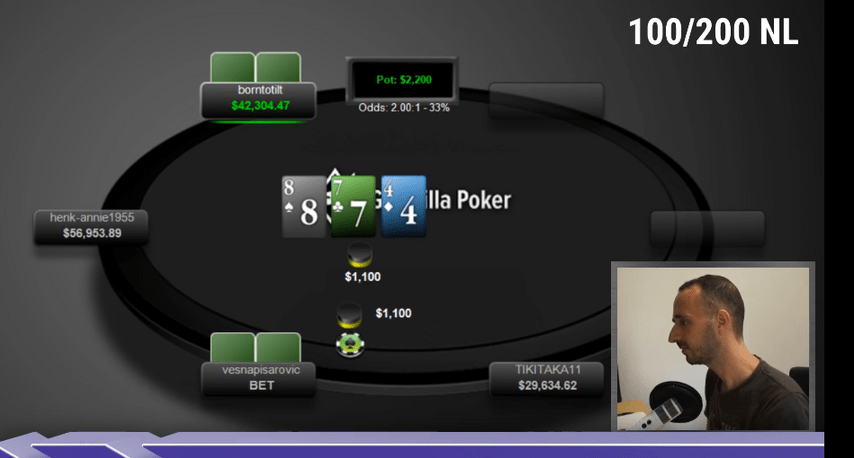
On the flop, Linus checks and Vesna bets the full pot! General understanding of poker suggests that the sizing is clearly incorrect and simply does not suit this texture. The board is set up in such a way that the BB player flops quite a few strong hands. He has , and all sets – the top of the range is fairly equal for both players. I'm not sure that in such conditions the button is interested in creating a large pot. It seems more logical to start with a smaller bet and, when called, increase the sizing on the next street after a significant portion of the BB's nut hands have check-raised on the flop. So the pot bet from the button surprises me a little.
Nevertheless, it is worth saying that despite the unusual nature of the line, such deviations from the optimal sizing rarely lose much EV, and they put an unprepared opponent in a difficult position. What to do against a pot bet with ? ? ? In an unknown situation, it is easy to make a mistake.
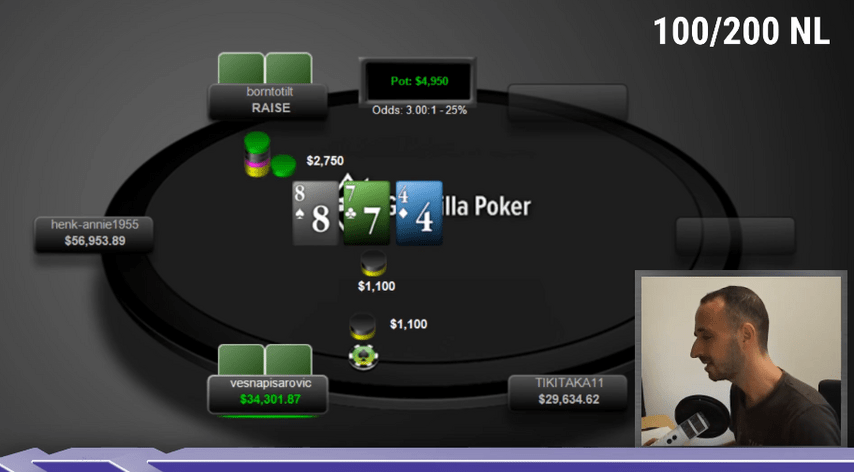
Linus check-raises with a small sizing. By doing so, he is saying that whatever the basis of his opponent's value range, Linus's hand is superior. Typically on this type of texture, check-raising for value requires at least two top pair. I don’t know how much the strategy changes significantly against a polarizing bet for a full pot, but, in general, Linus should be quite strong.
Vesna calls, which, of course, can be done quite widely. There can be both overpairs and board pairs in the bet-calling range.
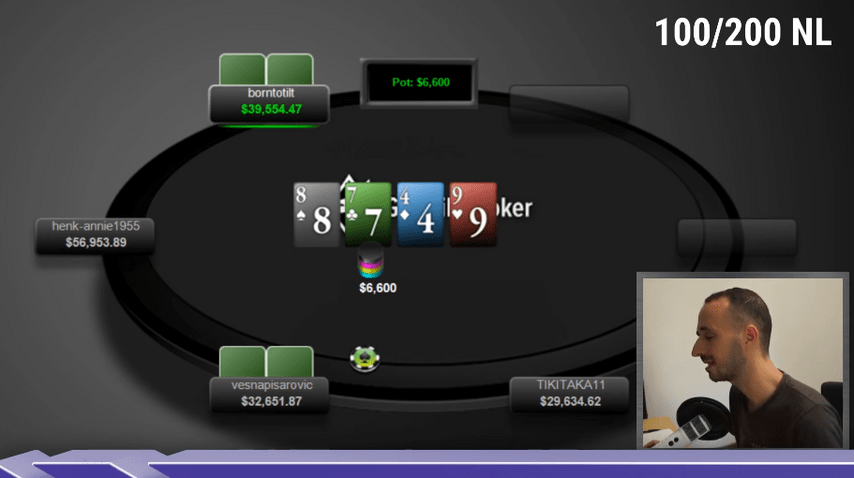
The nine of hearts on the turn makes a big difference. 16 new combinations were added at once and four T6s combinations. As many as 20 combinations are in the ranges of both players! Therefore, we must re-evaluate the strength of our hand. is not nearly as good anymore. I don’t know if even sets are enough! The stacks are deep, and the situation is not at all intuitive.
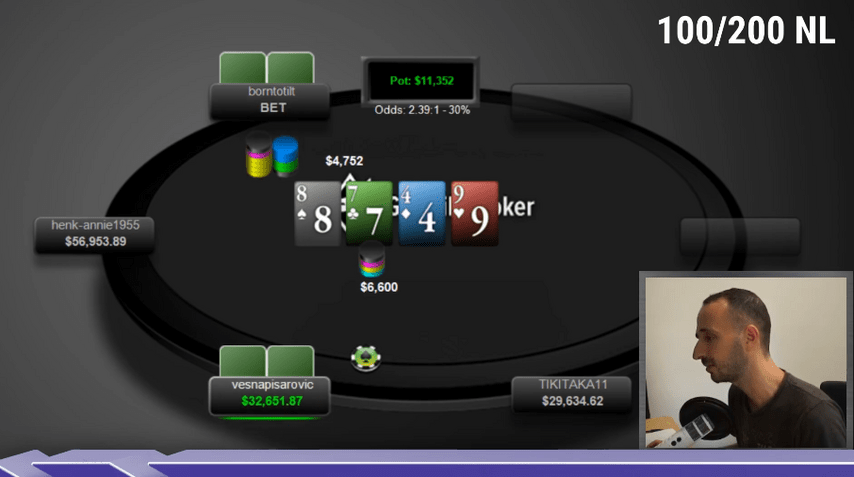
Linus bets 75% of the pot. I think this is an adequate sizing – both have a lot of nuts, this is not a situation where we can calmly overbet with a wide range. His value hands are straights and probably sets. Bluffs are backdoor flush draws with a five, six, or ten. For example, KTs, K5s, A5s, A6s. Maybe a pair with a six – or .
Vesna makes a call. You can't tell much about his range when calling. There may be , , , a set, two pair – a lot of different hands.
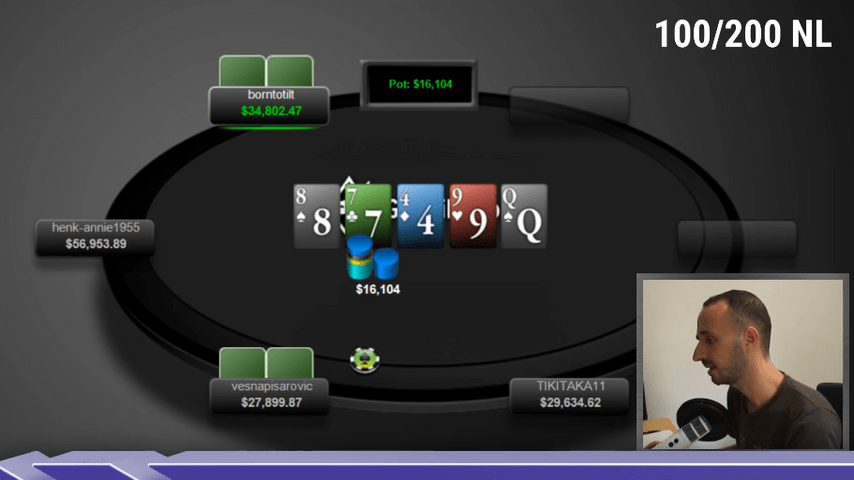
The river is a complete blank and changes absolutely nothing. Linus bets $11,594, 75% of the pot. In my opinion, the limit of value lies between and . Still, there are too many straights on the board for me to feel comfortable with the set. I don’t know if there is 65o in their ranges, but even without this hand, there are more than enough straight combinations. A very unusual board where sets are not that attractive.
Vesna goes all-in.
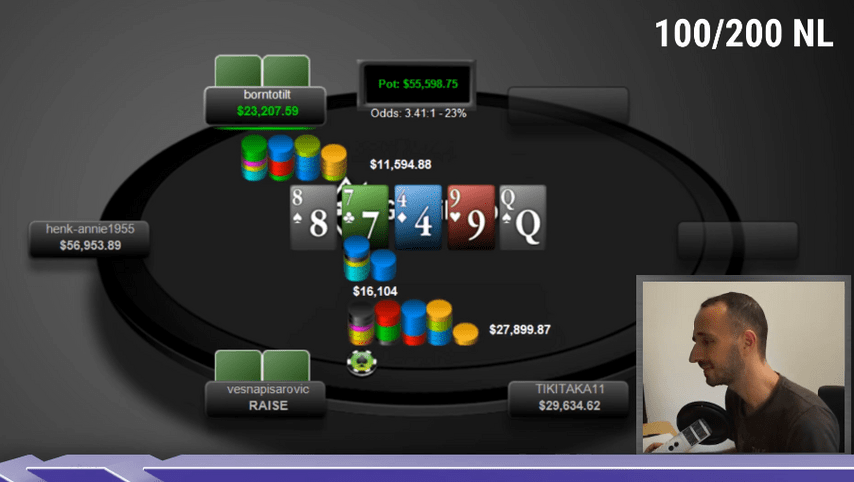
Value, I think, starts with T6s, maybe he would push with 65s.
Linus decides to call. The pot size is almost $72,000, close to 200bb.
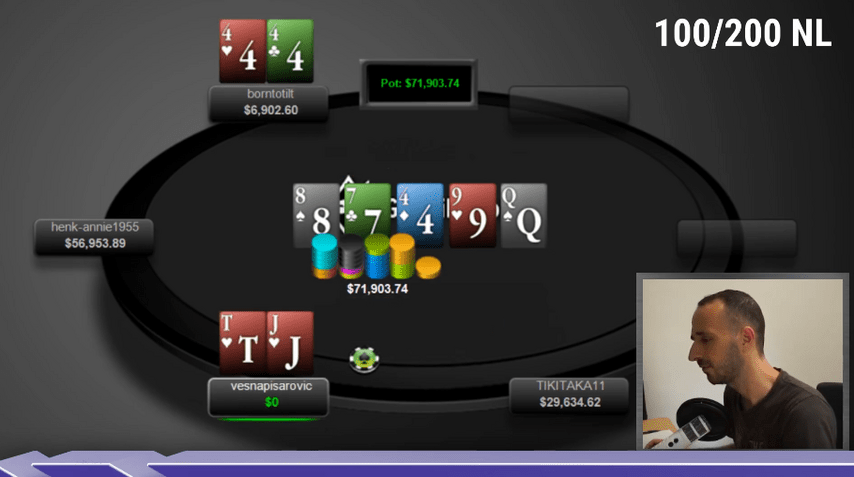
And Linus shows a set of fours! In my opinion, this is a mistake. I think the check-raise on the flop is done with little frequency, and we definitely have no right to barrel that big on the next streets. I'm probably wrong here, but we'll soon find out. The player in position shows , for him, the play is very natural on all the streets.
Well, let's open Pio and see where I'm wrong. The rake structure in our simulation is slightly different, but this should not be a problem.
Button strategy on the flop:
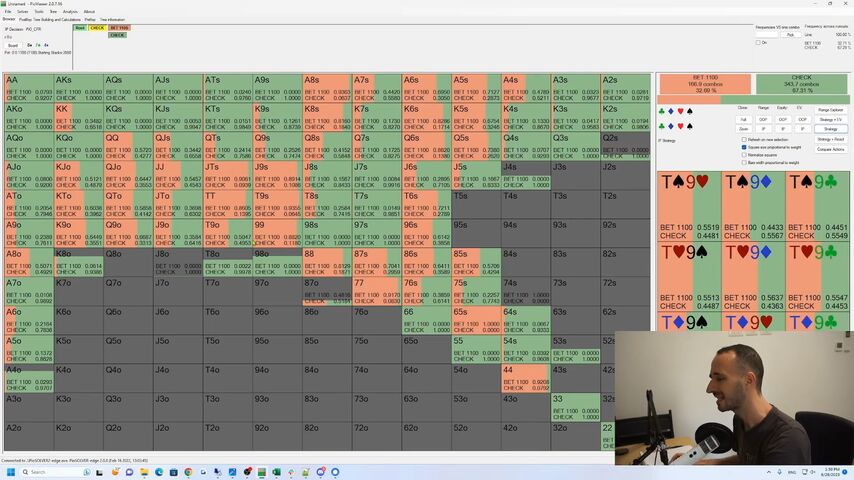
Linus's play:
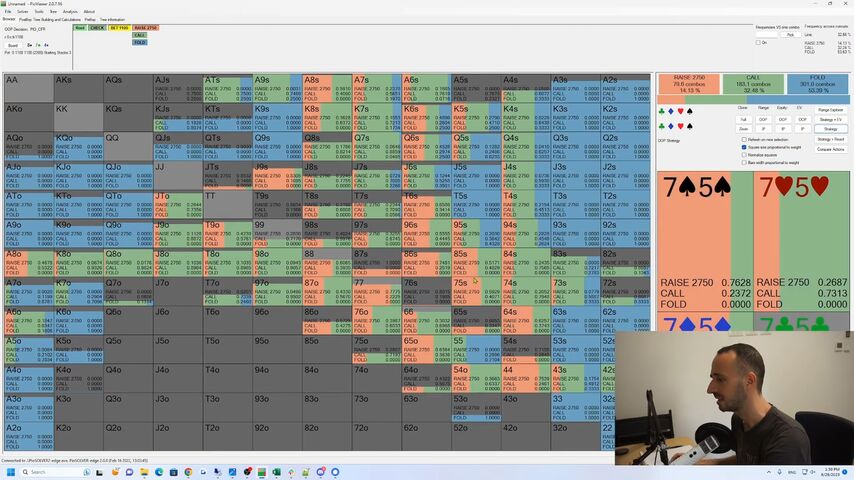
A set of fours really does go to check-raise, okay. and almost no check-raises, the lower limit is as I thought .
Let's count the turn.
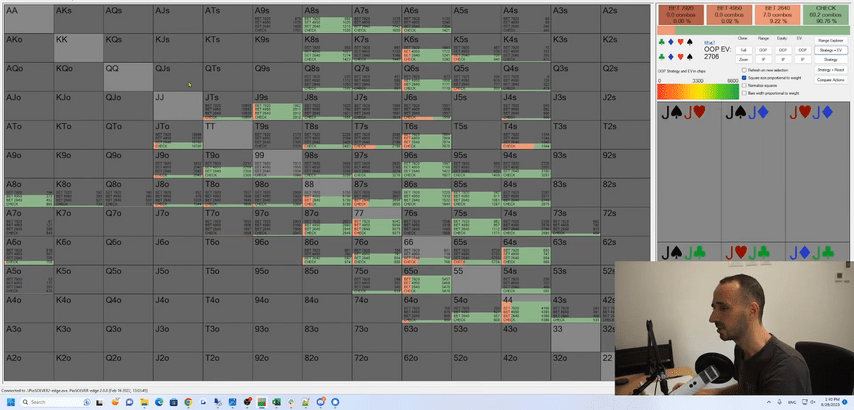
This is truly one of the worst turns. The solver almost completely stops! The second barrel is bet with less than 10% of hands and only a small sizing. The fact that there is a lot in the opponent's range and , and we have almost none, forces us to hit the brakes.
The button usually responds to a big second barrel by playing his nut straight quickly.
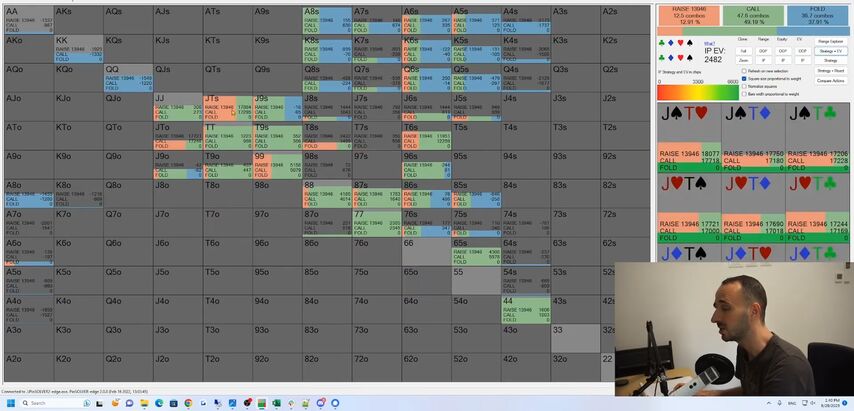
In this hand, however, he chose the slowplay line.
On the river, Linus finds himself in a branch of the solver that does not have sets of fours. However, if they were, the solver would agree in principle that you could bet 75% with them – provided that the opponent raised the correct amount , and on the turn.
In response to an all-in, calling with fours comes out slightly positive. Although it's a little strange to look at EV combinations that shouldn't be in the range.
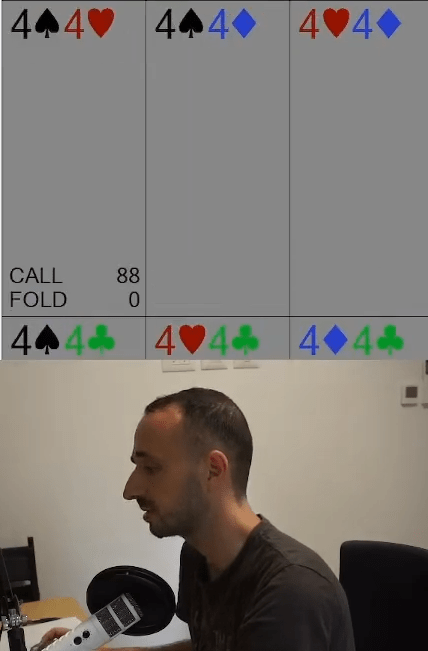
Let's try to get the fours back into Linus' range! Let's remove all his other sizings on the turn, leaving only 3/4 of the pot, and add the opportunity for his opponent to place a small bet (25% of the pot) in response to a check – the fact that there was none may affect the BB's strategy.
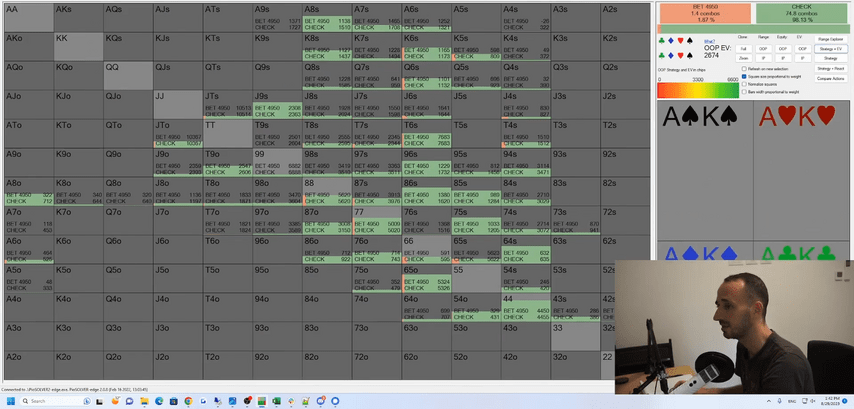
The main takeaway hasn't changed: he should check almost his entire range. But thanks to the fact that some tiny percentage went into the second barrel, we can see what to do with them on the river.
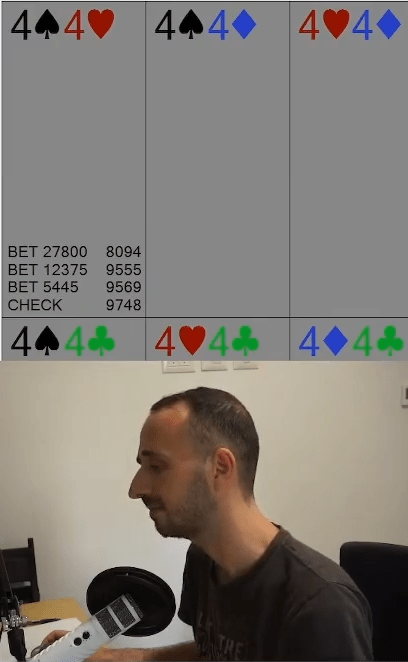
Checking is by far the best option. So Linus really did misplay his hand.
Surprisingly, we actually found a serious mistake from him! In my opinion, this happened for the first time in my practice – he simply could not decipher the situation that had arisen. It is possible that his line is good at 100bb, but as the depth increases it stops working. Well, he is only human.
What can be concluded? A very rare turn came out, adding a huge number of new nut combinations – 20 straights and 3 high sets. Most of these combinations are not in our range, and a red light should flash in our heads: use extreme caution! After all, all our best combinations that check-raise for value are no longer so strong.













